Dive into the captivating world of Birman cats—a breed shrouded in fascinating legends and adorned with a majestic coat. Known for their friendly personalities, these beautiful cats have found their way into the hearts and homes of many.
This article offers a comprehensive overview of the Birman cat, charting their mystical origins, their journey to the Western world, breed recognition and development, their distinctive physical features, and their enchanting personality traits.
We'll also touch upon the specific care considerations to ensure the health and happiness of your Birman cat. So, let's being to understand better these gorgeous, gold-dusted companions.
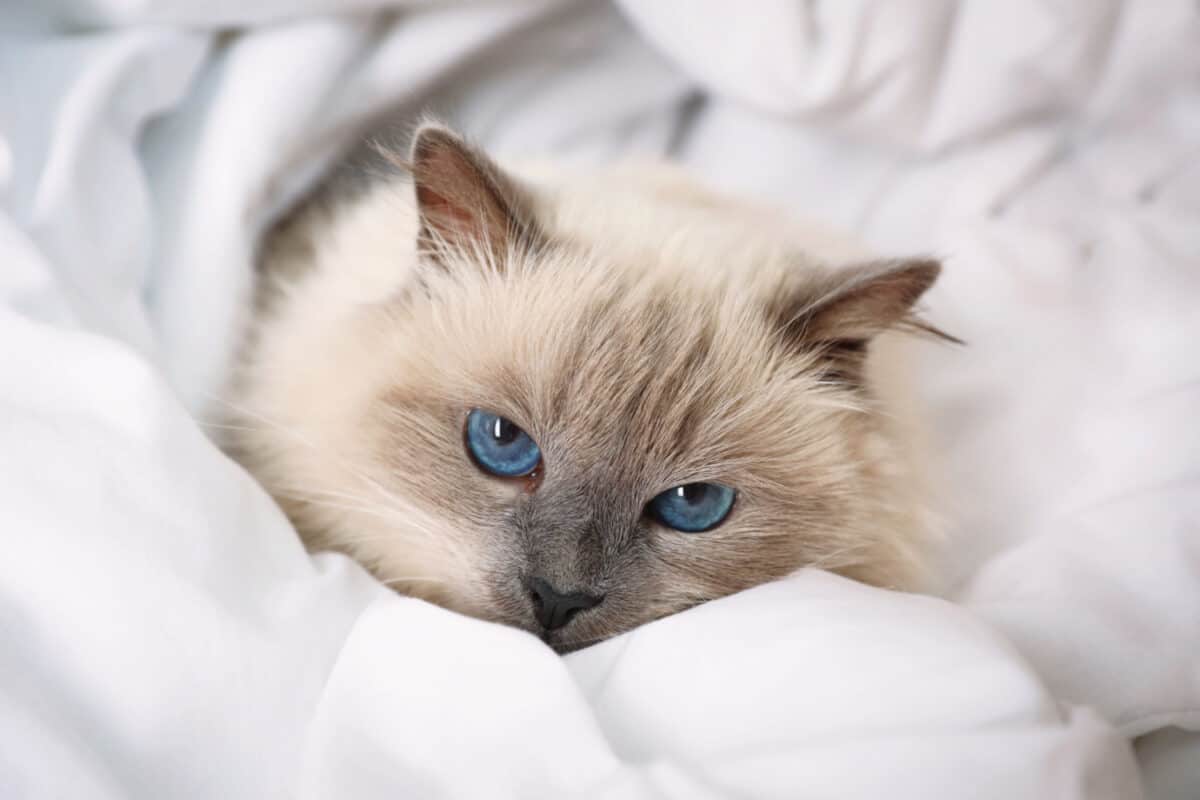
The Mystery of Birman Origins
Brimming with allure and charm, the origin story of the Birman cat is wrapped in mystique and ancient tales. According to the most famous legend, Birmans were the esteemed companions of Kittah priests in the far-off land of Burma.
These cats, with their striking appearance and mesmerizing eyes, were considered sacred, integral parts of temple life.
The Sacred Birman Cat in Burma
The most fascinating tale centers around a dramatic incident within the temple. The story goes that a priest was attacked and killed, and at that fatal moment, his yellow cat transformed. The cat's coat turned creamy gold, resembling the gorgeous Birmans that we see today, complete with their mesmerizing blue eyes.
This miraculous transformation only emphasized the high spiritual regard for these cats in Burma. They were more than mere pets; they were sacred companions, blessed with an aura of divinity.
SIGN UP FOR THECATSITE'S EMAIL UPDATES >
The Journey to the Western World
Immersed in whispers of intrigue and daring, the story of the Birman cat's arrival in the Western world begins around 1919.
To rescue these sacred cats from potential harm and to share their beauty with the world, two Birmans were secretly transported out of Burma. The audacious act of smuggling these enchanting cats was fraught with perils and unexpected challenges.
The Voyage to France
The unique charm and elegant demeanor of Birman cats quickly captivated the French. In 1925, a mere six years after their arrival in the country, the French recognized Birmans as a separate breed.
This acknowledgment was a significant milestone, setting the stage for the breed's future popularity.
The journey from Burma to France was a demanding ordeal, not designed for the faint of heart, let alone delicate creatures like cats. Tragically, the male Birman didn't survive this arduous trip. However, the pregnant female displayed exceptional resilience.
She survived and, upon arrival, gave birth. Her offspring marked the beginning of the Birman breed in the Western world, solidifying her place in history and demonstrating the incredible strength inherent in this breed.
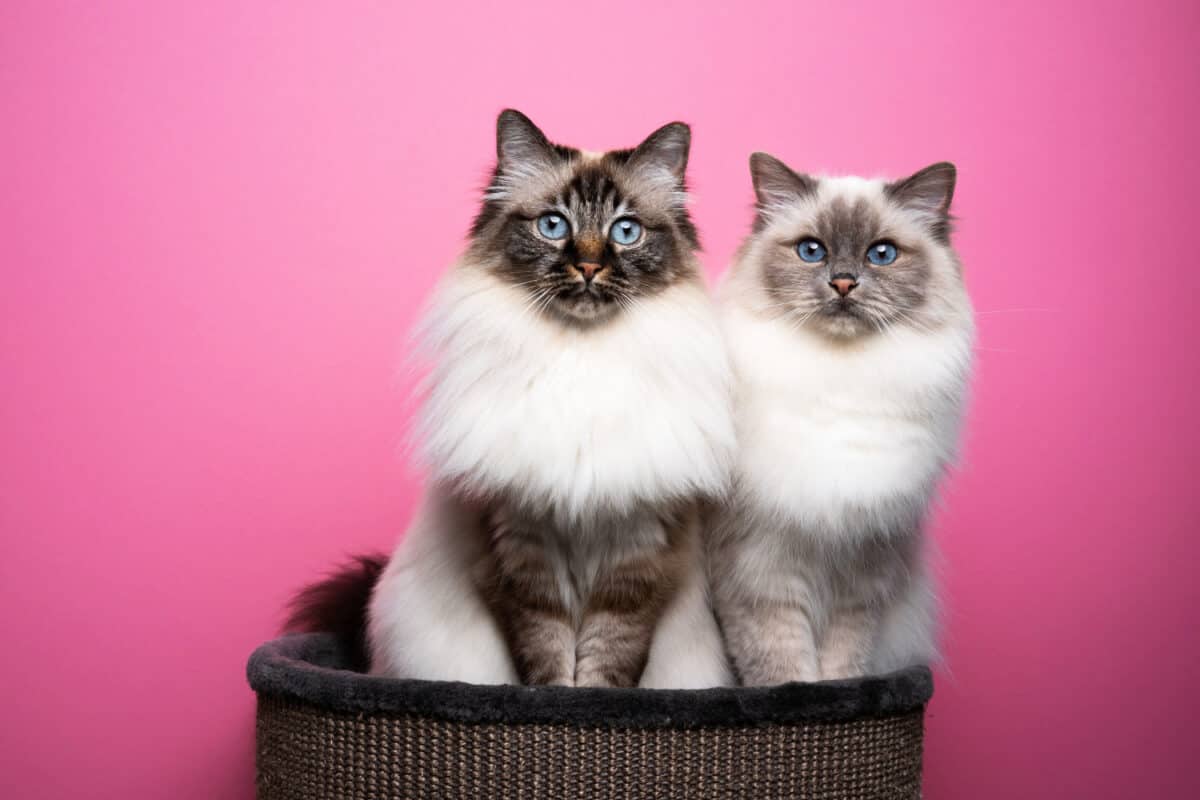
Recognition and Development of the Birman Breed
Survival After World War II
World War II took a toll on many aspects of life, and the Birman breed was not spared. When the dust of the war finally settled, only two Birman cats remained. The survival of this beautiful breed hung in the balance, prompting urgent action to save them from potential extinction.
Revival Through Outcrossing
With the Birman breed at risk of disappearing, a crucial decision was made. Outcrossing, the practice of breeding Birmans with other breeds, was utilized to rejuvenate the numbers.
The road to recovery was gradual, with registries typically requiring five generations of pure breeding to fully accredit a breed for championship competition.
The Arrival of International Recognition
After years of rebuilding, the Birman cat was ready to step back into the limelight. In 1967, their efforts were rewarded when the Cat Fancier’s Association recognized the breed.
This moment marked a successful comeback, celebrating the resilience of the Birmans and their admirers. It was a testament to the breed's undeniable allure and the dedication of those committed to its preservation.
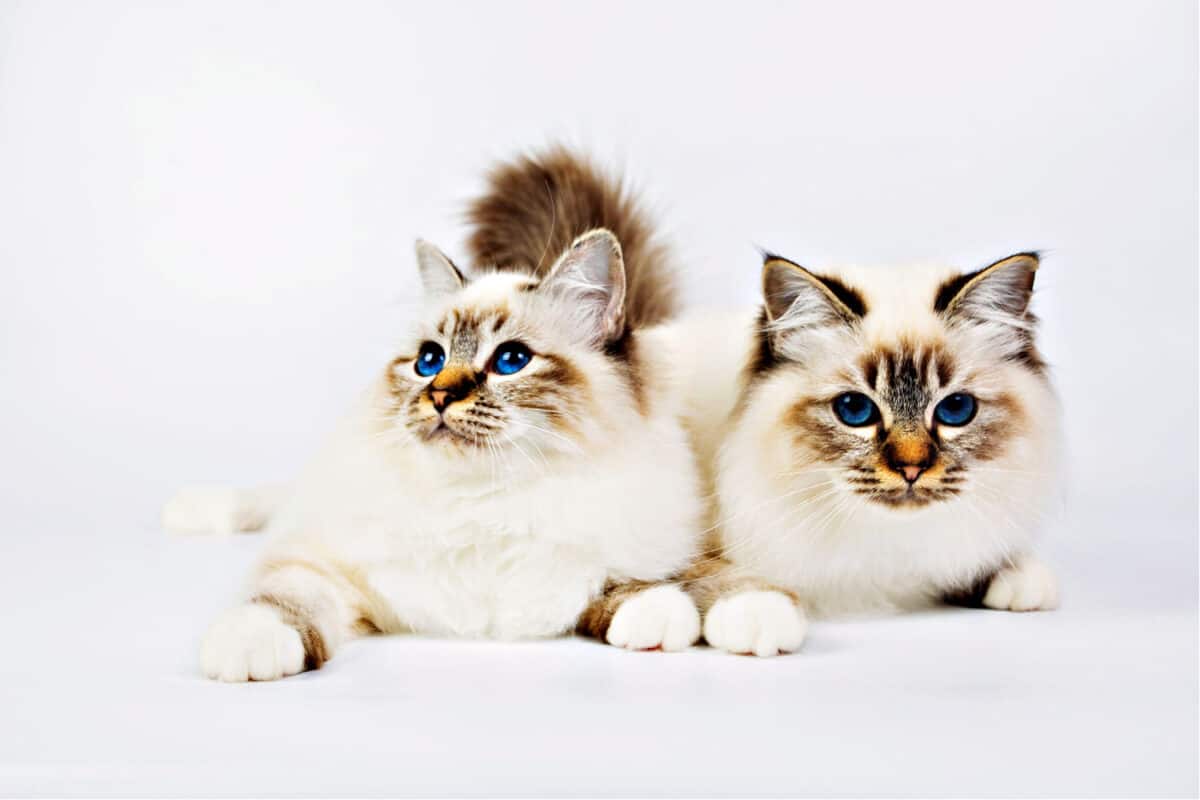
Breed Description
The Birman cat is the epitome of grace and beauty. Donning a creamy coat that shines like spun gold, this cat boasts a long, sturdy body style. Males typically weigh between 8 and 12 pounds, while females are slightly smaller.
A Spectrum of Color Points
This creamy-colored cat looks like he’s rolled in gold dust. Points — the dark face, tail, and legs — can be seal point, blue point, chocolate point, and lavender point, similar to the Siamese. Eyes are bright blue, again like the Siamese.
The Secrets of the Birman's Fur
Birmans wear silky, glossy fur that refuses to mat. However, this coat loves attention. Regular brushing is more than a grooming necessity; it's a bonding activity that the cat cherishes.
A Closer Look at the Birmans' Unique Paws
Perhaps the most distinctive feature of the Birman is their charming white feet. On the front, they sport perfect white socks. The back paws, however, boast a lacing effect, where the white travels up the back of the leg, ending in an elegant point.
This unique marking sets the Birman apart, adding an extra dash of allure to their appearance.
Birman Cat Personality
The Birman cat is not only an aesthetically pleasing breed, but also one that carries an endearing personality. This breed is characterized by a calm, sweet, and well-mannered disposition.
Though quiet, Birmans are playful, making them an enchanting presence in any household.
Interacting and Caring for Your Birman Cat
Interaction with Birmans is a joy. These cats enjoy being with their human family and will often seek your company.
But they are also independent enough to entertain themselves when you're busy. Regular grooming, interactive playtime, and lots of affection will keep your Birman happy and healthy.
Birmans as Family Pets: A Perfect Match
Birmans make great family pets due to their amicable nature. They are gentle and patient with children and can get along well with other pets.
Their balanced personality—being both playful and relaxed—makes them a perfect fit for families of all sizes and ages. With a Birman cat around, your home will be filled with warmth, fun, and plenty of purrs.
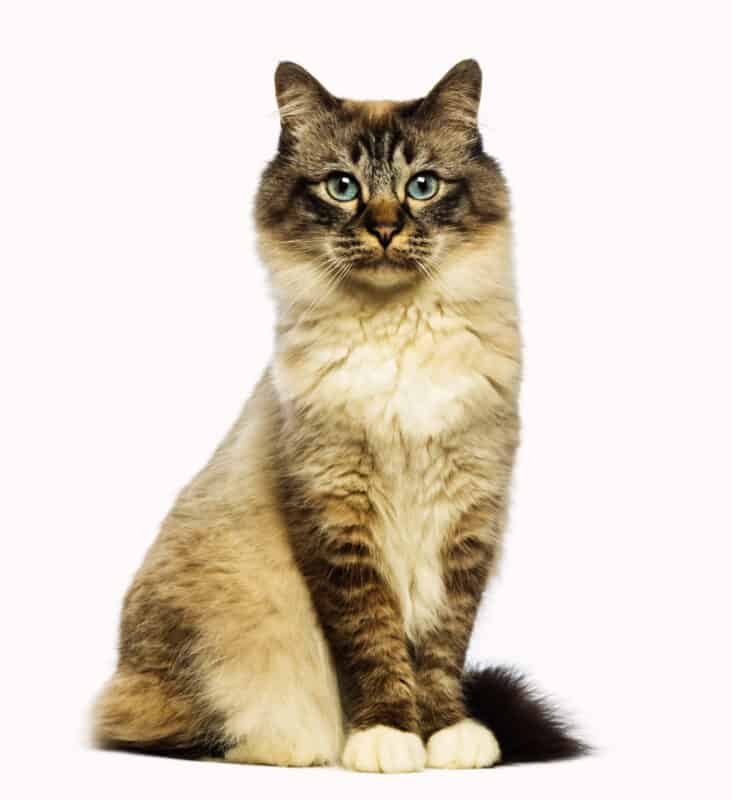
Health and Special Care Issues
Potential Health Issues in Birmans
While Birmans are generally a healthy breed, like any other pets, they may encounter minor health issues. In the case of Birmans, they may experience minor sinus problems.
Nevertheless, it's crucial to remember that every cat is an individual and may or may not be prone to these potential health concerns.
Ensuring Your Birman Cat's Wellbeing
Ensuring a Birman cat's well-being involves regular veterinary checkups, a balanced diet, and regular exercise. Grooming is also essential - although their hair doesn’t mat, it still begs to be brushed.
This not only maintains the condition of their coat but also provides an opportunity for bonding.
A Reflection on the Birman Cat
From its intriguing origins shrouded in legend to its journey to the Western world, the Birman cat certainly carries a rich history. Its distinctive physical characteristics and charming personality have made it a beloved breed around the globe.
Birman cats make great companions. They're not just beautiful to look at, but their calm and sweet-natured personality also makes them a perfect addition to any family.
Whether you're a single owner or have a house full of pets and kids, a Birman cat can undoubtedly bring an extra dash of joy to your life.
You might also like:
Want to read more about cat breeds? You might also like:
SIGN UP FOR THECATSITE'S EMAIL UPDATES >

Comments? Leave them using the form below. Questions? Please use the cat forums for those!
Note: We may get commissions for purchases made through links on this page.


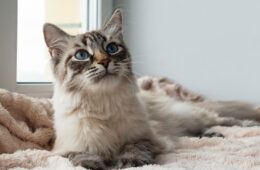
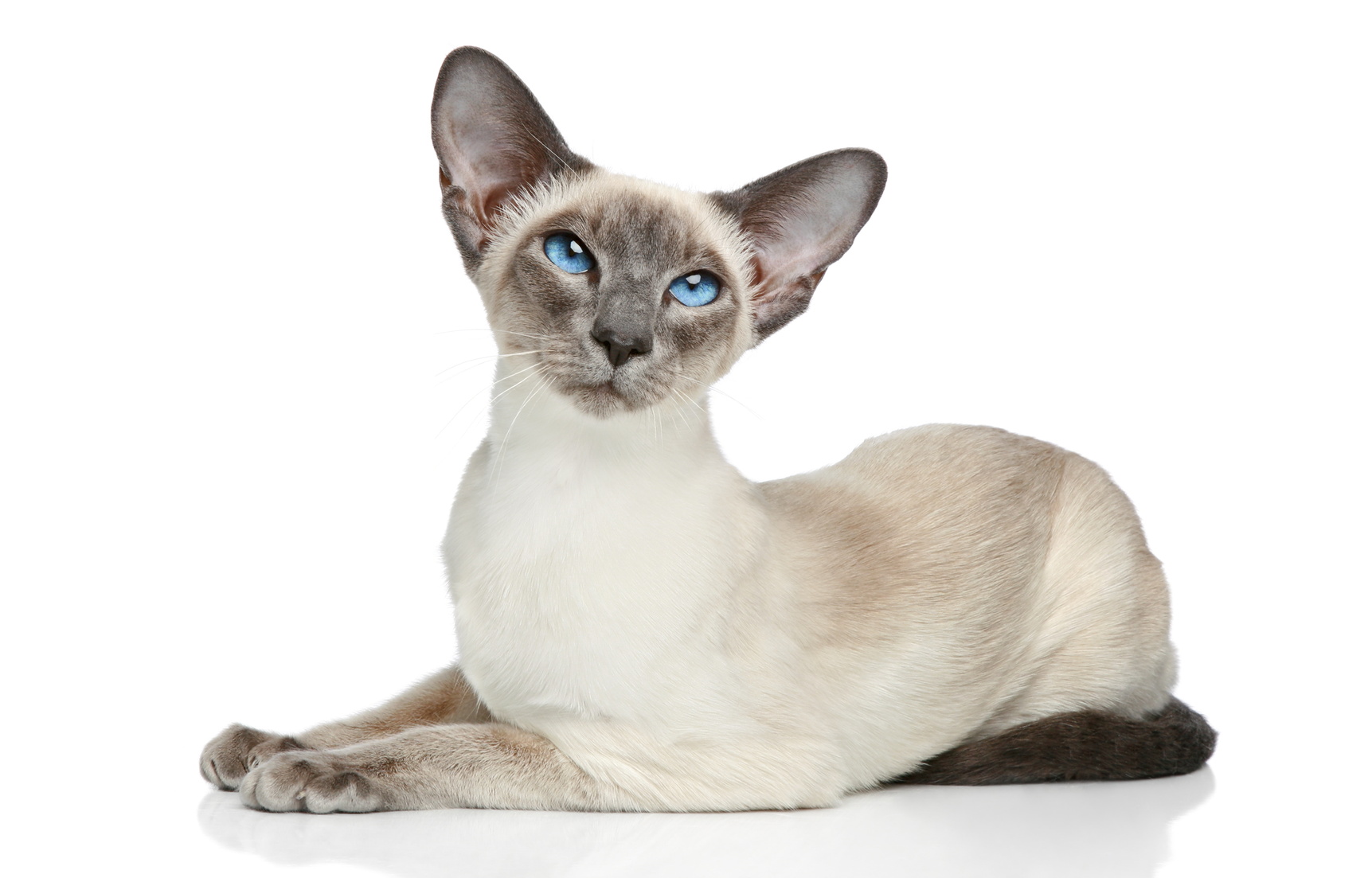
One comment on “Birman Cats: A Comprehensive Guide”